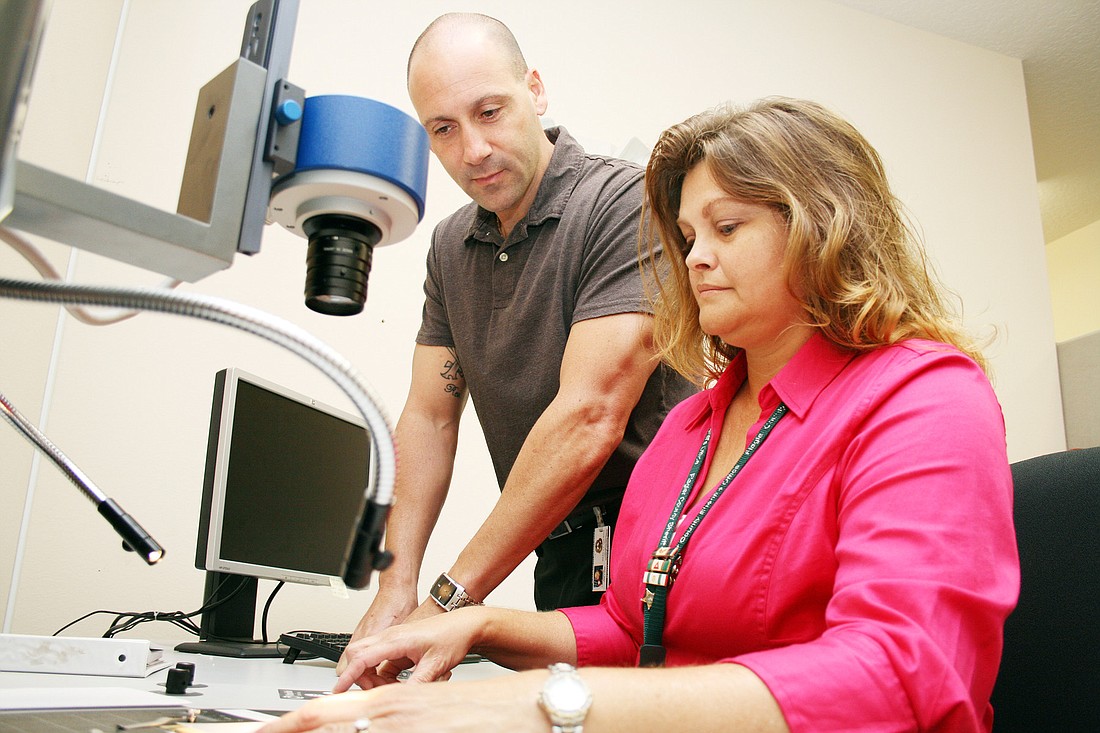- April 25, 2024
-
-
Loading

Loading

The Sheriff’s Office is now in the fingerprint business.
Thanks to about $100,000 in drug seizure funds, the Flagler County Sheriff’s Office is now trained and ready to use its own fingerprint identification machine, the MorphoTrak.
“It expedites our procedure of locating a suspect and getting a suspect in custody,” Sheriff Donald Fleming said. “It could have an impact on reduction of crime.”
Before the purchase, evidence technicians who were able to find fingerprints at a crime scene had to send those prints to a lab in Jacksonville, or Volusia County, where a MorphoTrak would read the print and compare it to other prints of convicts in a database.
That could take weeks because of the backlog of cases.
If and when the MorphoTrak found a positive match, the second step would be to send the print to a certified technician to verify the match.
That second step still has to be taken because there isn’t a certified technician in Flagler County yet, Sgt. Chris Sepe said. But now, the first step can be skipped because Flagler has its own MorphoTrak.
“Instead of weeks, it will take minutes,” Sepe said. And that can shave off weeks in an investigation — crucial time for detectives.
“Leads do go cold,” Sepe said. “You may have interviews to conduct, and people forget things … After six months, it’s hard to follow up on an investigation.”
In the long run, Fleming said, quicker turnaround times in fingerprint identification is a good thing: “That means he’s not out there still committing burglaries.”
But it’s not an easy task to find a print, let alone to get a match. On the crime scene, Sepe said, the technician can only lift prints from nonporous, relatively clean, hard surfaces. Technicians use a variety of techniques, including dusting for prints with volcanic ash.
If a criminal uses gloves, no prints can be taken. If a criminal touches a liquor store counter, for example, even though it’s nonporous, a print would likely not be usable because fingerprints can’t be dated. Someone might have touched a counter today or it might have been weeks ago.
In the July 6 case of the Star Liquor robbery, the suspect was caught on video threatening the storeowner with a gun. A partial print was taken on a liquor bottle, but upon further review, it was determined that the suspect picked up the bottle with a hat.
In addition, a good print might not match anyone in the database. Only prints taken from convicts are admissible in the system, he said.
But even in the training phase, he said, technicians used real cases to practice finding fingerprint matches, and the MorphoTrak helped them to find new leads.
“It’s an investigative tool,” Sepe said. “It’s not a conviction, but if that fingerprint leads us to someone who matches the identification (of a suspect), you look and see what vehicles he owns, and you start putting your case together. It’s a lead.”